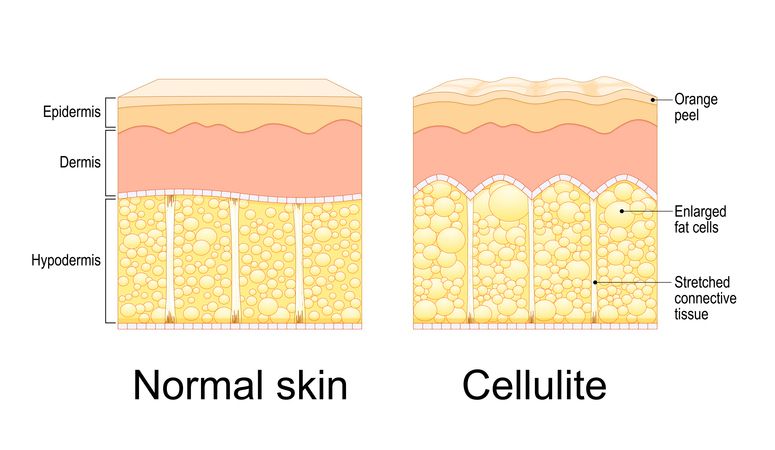
Author: Natalie Ng|Updated: 29 April 2025
Shaving can leave your skin feeling smooth and fresh, but for some, it also causes irritation, redness, and discomfort—better known as razor burn. This common issue can affect anyone who shaves regularly, and understanding how to treat and prevent it can make a big difference in maintaining healthy skin. Let’s take a closer look at razor burn, its symptoms, and how to treat it effectively.

Signs and Symptoms of Razor Burns
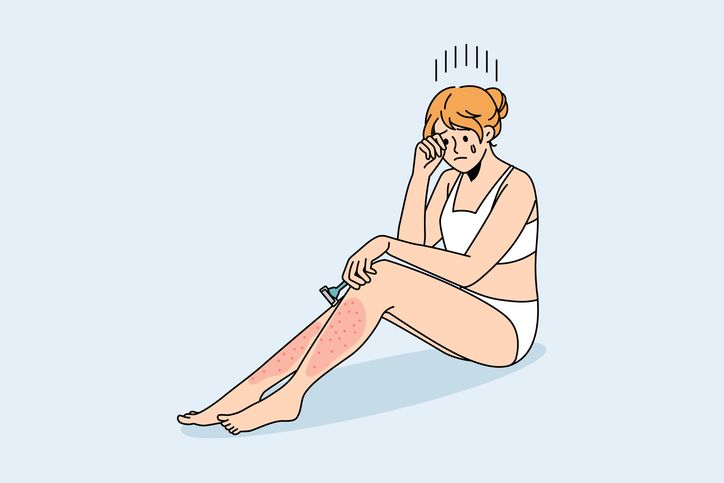
Razor burn is a common skin irritation that occurs after shaving, often leaving the skin red, irritated, and uncomfortable. Understanding the signs and symptoms of razor burn is essential for identifying and treating it correctly. Here’s a detailed look at what you might experience when you get razor burn and how to spot it.
1. Redness and Swelling
One of the most immediate signs of razor burn is redness in the shaved area. This redness happens because the skin becomes inflamed after being scraped by the razor. It often appears soon after shaving and can affect large areas, such as your legs, underarms, or the pubic area. In addition to redness, the skin may feel swollen or puffy. This occurs as a result of irritation that causes the blood vessels in the skin to dilate, making the area look inflamed. If you experience this type of irritation, it’s a clear sign that your skin is reacting to the shaving process.
2. Burning and Stinging Sensation
A burning or stinging sensation is another common symptom of razor burn. It can occur immediately after shaving or a few minutes later. The sensation often feels similar to a sunburn, where the skin feels hot and uncomfortable. This discomfort arises from the skin’s reaction to the friction of the razor. The burning sensation is typically felt in more sensitive areas, such as the face, bikini line, or underarms, where the skin is thinner and more delicate.
3. Itchiness
Itchiness is one of the most bothersome symptoms of razor burn. It often occurs once the skin has started to heal but can happen immediately after shaving as well. The itchy feeling arises from the inflammation in the skin, and it may cause you to scratch the affected area. However, scratching can worsen the irritation, potentially leading to scarring or the development of ingrown hairs. If you feel itchy after shaving, try applying a soothing lotion or gel to calm the area instead of scratching.
4. Bumps or Pustules
In some cases, razor burn can cause small bumps to form on the skin. These are often referred to as razor bumps or ingrown hairs. These bumps occur when the shaved hair curls back into the skin, causing inflammation in the hair follicle. This can be more common in areas with coarse or curly hair, such as the pubic area or underarms. If these bumps become filled with pus, they may look like small pustules, which is a sign that the skin has become infected. While razor bumps can often heal on their own, they can be painful and may require specific treatments to clear up.
5. Tenderness and Pain
After shaving, you may experience tenderness or pain in the affected area. This is usually due to the inflammation caused by friction from the razor. The skin may feel sore, especially when you touch or rub it. The tenderness can vary in severity depending on how sensitive your skin is or how aggressive the shaving process was. In more serious cases, shaving too closely or with a dull razor may cause cuts or nicks that contribute to the pain and discomfort.
6. Increased Sensitivity
If you notice that your skin feels more sensitive than usual after shaving, it’s a clear sign of razor burn. The sensitive skin, especially around the facial hair areas or sensitive zones like the bikini line, is more likely to become irritated after shaving. This heightened sensitivity can last for several hours or even days after you shave. During this time, your skin may be more reactive to things like heat, friction, or even certain products that come in contact with the shaved area. Sensitive skin types are more prone to razor burn, so it’s important to use extra caution when shaving these areas.
7. Ingrown Hairs and Folliculitis
Sometimes, razor burn can lead to the development of ingrown hairs or even folliculitis (inflamed hair follicles). Ingrown hairs occur when the shaved hair grows back into the skin, forming a bump or pustule. Folliculitis is an infection of the hair follicles, often caused by bacteria entering the skin through the irritated follicles. Both of these conditions can develop after shaving and may cause further pain or redness. If you see a bump filled with pus or notice the area becomes increasingly painful, you may need medical treatment to clear up the infection.
Duration of Symptoms
Typically, razor burn lasts for about two to three days, and the symptoms usually improve as the skin heals. However, if the irritation doesn’t go away or worsens, it could be a sign of a more serious issue. For example, if you notice fluid-filled sores or if the area continues to feel inflamed after a few days, this may indicate pseudofolliculitis barbae or another skin condition that requires medical attention. In these cases, it’s best to consult a doctor or dermatologist to get the right treatment.
Signs of Infection
If you notice any of the following, you may be dealing with an infection instead of regular razor burn:
• Pus-filled sores or pustules
• Increased redness or spreading inflammation
• Pain that becomes more intense over time
• Fever (in severe cases)
If any of these signs occur, it’s important to seek medical attention to prevent the infection from worsening.
How to Tell the Difference Between Razor Burn and Other Skin Conditions
Razor burn can sometimes be mistaken for other conditions, such as folliculitis (infection of hair follicles), ingrown hairs, or even eczema. However, razor burn is usually a result of shaving irritation and tends to appear shortly after you shave.
Unlike folliculitis (which involves pus-filled pimples and swelling), razor burn typically doesn’t produce visible bumps unless it develops into razor bumps or ingrown hairs. If you experience any symptoms that don’t improve after a few days, it's a good idea to speak with a healthcare professional to rule out other conditions.
Recognizing the signs and symptoms of razor burn early can help you treat it effectively and prevent further irritation. By taking action quickly, you can soothe the affected area and minimize discomfort, allowing your skin to heal faster.

Treat Razor Burn With These Natural Home Remedies
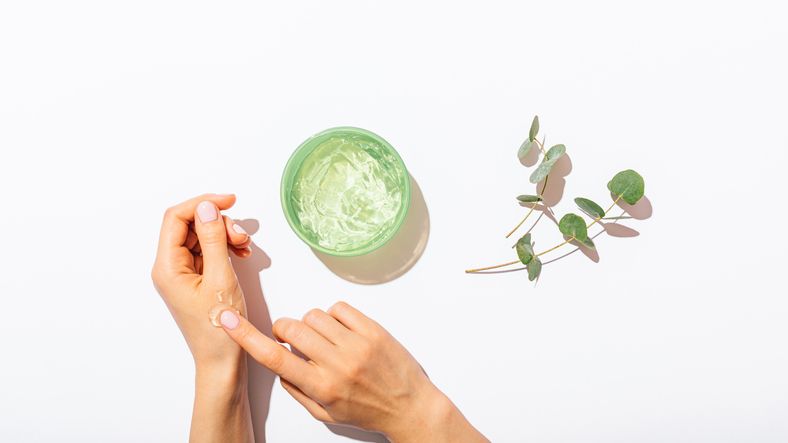
If you're dealing with razor burn, the good news is that there are several natural home remedies you can use to help soothe and heal the irritation. These remedies are easy to find, and they work effectively to calm the skin and prevent further discomfort. Here are some of the most reliable options:
1. Aloe Vera
- Soothing and Cooling Relief
Aloe vera is one of the most popular natural remedies for razor burn due to its cooling and anti-inflammatory properties. It helps reduce redness, swelling, and pain caused by irritation. Simply apply fresh aloe vera gel to the affected area after shaving to cool the skin and promote faster healing. Aloe vera also works well for calming itchiness and preventing further irritation.
You can find aloe vera gel at most pharmacies, or you can use the gel directly from an aloe vera plant. The natural gel is packed with vitamins and antioxidants that aid in skin recovery, making it a go-to remedy for sensitive skin after shaving.
2. Witch Hazel
- Reduces Inflammation and Tightens Pores
Witch hazel is a natural astringent that helps tighten the skin and reduce inflammation. It’s especially effective at treating swelling and redness caused by razor burn. Witch hazel can also prevent ingrown hairs by reducing the size of the pores, making it more difficult for hair to grow back into the skin.
To use, soak a cotton ball with witch hazel and gently apply it to the affected area. It will help to soothe the skin and prevent the irritation from getting worse. Witch hazel is also known for its mild antimicrobial properties, making it an excellent choice for helping to prevent infection in the irritated follicles.
3. Tea Tree Oil
- Prevents Infection and Reduces Inflammation
Tea tree oil is known for its powerful antimicrobial properties. It can help cleanse the skin and prevent infection, which is especially useful if you have pustules or razor bumps after shaving. Tea tree oil can reduce the chances of developing an infection while also soothing the area and calming inflammation.
To use, dilute the tea tree oil with a carrier oil like coconut oil to avoid irritation. Apply the mixture to the affected area with a cotton ball, and it will help calm both redness and swelling. Tea tree oil is particularly effective in preventing ingrown hairs, which can often occur after shaving.
4. Coconut Oil
- Deeply Moisturizes and Repairs Skin
For those looking to moisturize their skin after shaving, coconut oil is a natural and effective option. It has moisturizing properties that help heal the skin without clogging pores. Coconut oil also has anti-inflammatory properties that soothe irritation and prevent further damage to the skin’s barrier.
Apply a thin layer of coconut oil to the affected area to help hydrate and restore the skin. It will keep the skin soft and smooth while reducing itchiness and redness. Coconut oil is also great for preventing future razor burn if used regularly as a post-shave moisturizer.
5. Colloidal Oatmeal Baths
- Relieves Severe Inflammation
If you experience severe irritation or inflammation after shaving, a colloidal oatmeal bath can provide immediate relief. Oatmeal is known for its ability to calm and soothe itchy, inflamed skin. It works by forming a protective layer on the skin, reducing redness and swelling.
You can add colloidal oatmeal to a warm bath and soak for 15-20 minutes. This will help reduce the discomfort caused by razor burn and promote healing. It’s a gentle and effective remedy, especially if you have large areas of irritated skin, such as on your legs or arms.
6. Hydrocortisone Cream
- Reduces Persistent Redness and Swelling
If your razor burn symptoms are more persistent, hydrocortisone cream can help reduce redness, swelling, and inflammation. This over-the-counter remedy works by calming the skin and suppressing the immune system's response to irritation, helping the skin recover faster.
Apply a thin layer of hydrocortisone cream to the affected area after shaving to reduce any pain or tenderness. However, it’s important to use this treatment sparingly, as prolonged use can lead to thinning of the skin. For most people, this should only be used for a short time until the razor burn heals.
Read More
Book Now to Experience
A3 Laser Hair Removal Treatment
1 Minute Self-Registration
Date should not be before minimal date

Top Over-the-Counter Solutions for Quick Relief
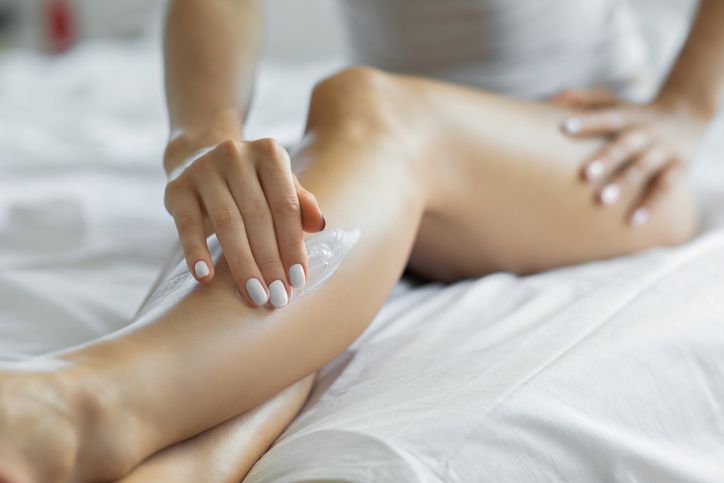
If you’re looking for fast relief from razor burn, several over-the-counter solutions can help reduce inflammation and irritation effectively. These products target the discomfort and support the skin’s natural healing process. Below are some of the top options you can use to ease razor burn and prevent future irritation.
1. Hydrocortisone Cream
- Reduces Redness and Swelling
Hydrocortisone cream is one of the most common over-the-counter treatments for razor burn. It’s an anti-inflammatory cream that can quickly reduce redness, swelling, and itchiness caused by razor burn. You can find hydrocortisone cream in 0.5% or 1% strengths. It works by calming the skin’s response to the irritation, making it feel less sore and more comfortable.
When applying hydrocortisone cream, use a small amount on the affected area, and apply it sparingly. It’s recommended to only use it for two to three days to avoid skin thinning from prolonged use. If you still experience irritation after this period, you should stop using it and explore other options.
2. Alcohol-Free Aftershave
- Soothes Skin Without Drying It Out
Aftershaves can often cause further irritation due to their alcohol content, which can dry out the skin. Instead, opt for an alcohol-free aftershave that contains natural ingredients like witch hazel, chamomile, or calendula. These ingredients have soothing and anti-inflammatory properties, making them perfect for calming razor burn.
Witch hazel is a gentle astringent that helps tighten the skin and reduce inflammation, while chamomile and calendula provide additional healing benefits. These natural ingredients promote healing and help reduce itchiness and redness without drying out your skin. Look for aftershaves that are designed for sensitive skin, as they tend to be more gentle.

Expert Shaving Techniques to Prevent Irritation
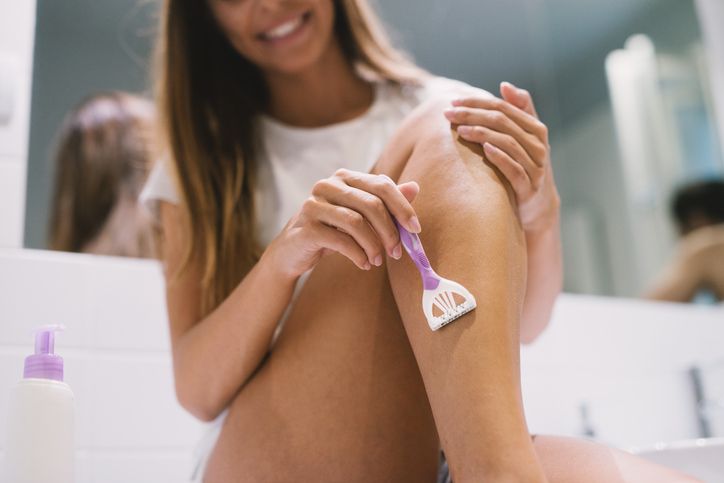
Mastering proper shaving techniques serves as your first line of defense against painful razor burns and skin irritation.
Your pre-shave preparation should begin with thoroughly exfoliating skin to remove dead cells, followed by applying a quality shaving cream to create proper lubrication.
When executing your shaving technique, always move the razor in the direction of hair growth using light, controlled strokes while avoiding multiple passes over the same area. A quality shaving brush helps evenly distribute cream and lift stubble for a closer shave.
For effective post-shave maintenance, immediately rinse with cool water and apply a moisturizing product to soothe the skin.
If you're prone to ingrown hairs or razor bumps, consider using a cool washcloth compress and taking breaks to avoid shaving affected areas until they heal.
Remember to regularly replace your razor blades and store them in a dry environment to prevent bacterial growth.
Book Now to Experience
A3 Laser Hair Removal Treatment
1 Minute Self-Registration
Date should not be before minimal date

Post-Shave Care Routine

A good post-shave care routine is essential for reducing razor burn and maintaining healthy skin. It’s not just about how you shave but also how you treat your skin afterward. Following a proper skincare regimen can help prevent irritation, razor bumps, and dryness, keeping your skin smooth and calm.
1.Cleanse Your Skin
- Remove Shaving Products and Dead Skin Cells
After shaving, it’s important to thoroughly cleanse your skin to remove any leftover shaving cream, dead skin cells, or debris that could clog your hair follicles. Clogged pores can lead to razor bumps or even ingrown hairs. Use a mild facial cleanser that’s suitable for your skin type, and gently massage it onto your skin in circular motions.
Rinse with lukewarm water to avoid irritating your skin further. Avoid using hot water, as it can worsen redness and swelling. Opt for warm water, which helps open your pores and makes it easier to cleanse your skin without causing additional irritation.
2. Apply a Hydrating Aftershave
- Soothes and Moisturizes Your Skin
After cleansing, apply an alcohol-free aftershave or balm to hydrate your skin. Shaving can strip your skin of moisture, leaving it dry and prone to irritation. A good aftershave with moisturizing properties helps replenish lost moisture, reducing the risk of razor burn and itchiness.
Look for aftershaves containing natural ingredients like witch hazel, chamomile, or aloe vera, as these soothe the skin and reduce inflammation. Avoid products with alcohol, as they can dry out and irritate the skin, making razor burns worse.
3. Cold Water Splash
- Reduces Swelling and Closes Pores
After applying your aftershave, splash your face with cold water. This step helps to close the pores that were opened during shaving and provides immediate relief to irritated skin. The cold water helps reduce inflammation and can calm any redness you may experience post-shave.
Avoid using hot water after shaving, as it can cause the skin to become more inflamed and irritated. Cold water, on the other hand, has a soothing effect that can help prevent razor burn and minimize the risk of razor bumps.
4. Aloe Vera for Cooling Relief
- Soothes and Heals Irritated Skin
For additional relief, consider applying aloe vera gel to your skin. Aloe vera has natural anti-inflammatory and cooling properties, making it perfect for calming post-shave irritation. It can help reduce redness and swelling, while also promoting faster healing of the skin.
Gently massage a thin layer of aloe vera gel onto the shaved area. This can be especially useful for sensitive areas like your face, legs, or pubic area, where razor burn is common. Aloe vera not only soothes the skin but also helps moisturize, leaving your skin feeling soft and smooth.

When Should You See a Dermatologist? Warning Signs of Razor Burn
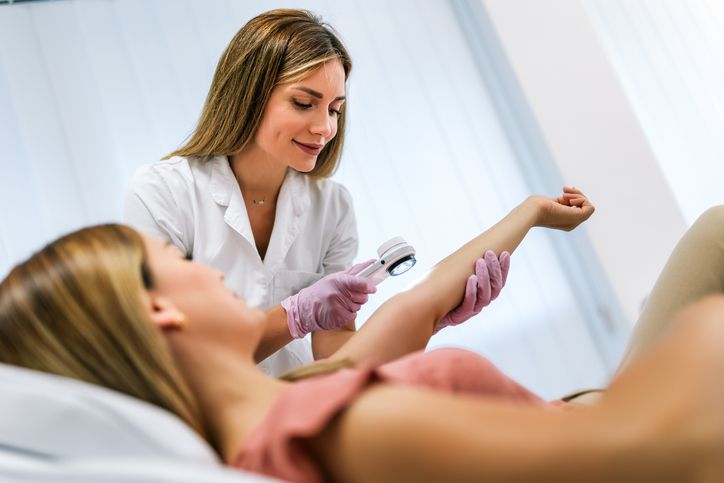
Most cases of razor burn can be treated at home with proper care. However, some symptoms require professional evaluation from a dermatologist. Recognizing these warning signs can help you address more serious conditions early on.
1. Persistent Swelling and Pain
Signs of Infection:
If you notice persistent swelling, painful sensitivity, or fluid-filled sores that don't improve with regular treatment, it may indicate an infection. These symptoms suggest that the irritation from shaving has become more severe or has led to a bacterial infection. In such cases, it's important to seek medical attention, as a dermatologist can provide appropriate treatment to prevent the condition from worsening.
2. Recurring Razor Bumps
When Shaving Techniques Don’t Help:
Sometimes, razor bumps continue to appear even after you change your shaving technique. If you’re regularly experiencing this, or if your razor burn is turning into a recurring issue, it’s a good idea to consult a dermatologist. Prolonged irritation can lead to scarring or post-inflammatory hyperpigmentation, especially on sensitive skin areas like the face or pubic area. A dermatologist can help identify the underlying cause and offer treatment options.
3. Folliculitis Barbae or Contact Dermatitis
Identifying Serious Conditions:
If your razor burn symptoms resemble folliculitis barbae (a bacterial infection of the hair follicles) or contact dermatitis (an allergic reaction to shaving products), you should seek professional help. These conditions require specific medical treatment, such as antibiotics for folliculitis or topical steroids for contact dermatitis, and cannot be treated by simple home remedies like exfoliation.
Signs of a Serious Infection
In rare cases, a serious infection can develop from razor burns or ingrown hairs. If you notice fever, a sweet-smelling discharge, or swollen lymph nodes, it’s crucial to see a dermatologist as soon as possible. These are signs of an infection that may require prescription medication, such as antibiotics, to prevent it from spreading.

A3 Laser Hair Removal Treatment: A Long-Term Solution for Razor Burn
Razor burn can be a frustrating issue, especially when frequent shaving causes persistent irritation, bumps, and redness. Fortunately,New Beauty’s A3 Laser Hair Removal Treatment offers a solution not only to unwanted body hair but also to the discomfort caused by regular shaving.
How A3 Works for Razor Burn Relief
A3 Laser Hair Removal Treatment uses light energy to target the melanin in hair follicles, destroying the follicle itself to stop hair growth. By gradually reducing the number of hair follicles, A3 minimizes the irritation that comes with shaving. In addition, the handpiece used in the procedure includes a sapphire cooling spot that helps soothe the skin, reducing redness and irritation—common issues that result from razor burn.
Benefits of A3 Laser Hair Removal for Razor Burn
• Prevents Future Irritation: By permanently reducing hair growth, A3 eliminates the need for shaving, which is often the root cause of razor burn. This leads to smoother, less irritated skin over time.
• Comfortable Treatment: The cooling system built into the A3 handpiece helps manage discomfort during the procedure, ensuring a more comfortable experience compared to traditional hair removal methods.
• No More Razor Bumps: A3 targets hair follicles at their root, preventing future razor bumps that typically form after shaving. This can significantly improve the texture of your skin.
• Brightens Skin: The A3 light energy also helps break down melanin in the skin, addressing post-inflammatory hyperpigmentation (dark spots) often left behind by repeated razor burn. This can lead to brighter, more even-toned skin after multiple treatments.
Long-Term Results with A3 Laser Hair Removal
As A3 targets hair at the follicle level, the treatment gradually slows down hair regrowth. Over the course of 6-12 sessions, the hair becomes finer and thinner, ultimately stopping growth entirely. This leads to long-term relief from razor burn and bumps, leaving you with silky smooth skin.
For those seeking a permanent solution to razor burn, A3 Laser Hair Removal offers an effective, non-irritating alternative to traditional shaving. This treatment not only addresses the immediate discomfort of razor burn but also prevents future irritation and improves overall skin appearance. Book your session to try it out now!
New Beauty's A3 Laser Hair Removal TreatmentBook Now to Experience
A3 Laser Hair Removal Treatment
1 Minute Self-Registration
Date should not be before minimal date
FAQ
1. Can razor burn be prevented altogether, or is it inevitable?
While it may not be entirely preventable for everyone, you can reduce the likelihood of razor burn by following proper shaving techniques, using high-quality razors, and incorporating pre- and post-shave skincare routines.
2. Is razor burn more common in men or women?
Razor burn can affect both men and women, but men are often more prone to it due to shaving the face regularly. However, women may experience razor burn on larger areas like the legs or bikini line, which can be more sensitive.
3. What are the best shaving practices to prevent razor burn on sensitive skin?
To prevent razor burn on sensitive skin, consider using a shaving cream designed for sensitive skin, avoid shaving dry skin, shave in short, light strokes, and regularly replace razor blades to ensure they are sharp.
4. Can using an electric razor help reduce razor burn?
Electric razors tend to be less irritating than manual razors because they don’t come in direct contact with the skin as much. However, electric razors may not provide as close of a shave, which can sometimes leave stubble that may still cause irritation.
5. What should I do if my razor burn turns into ingrown hairs?
If razor burn leads to ingrown hairs, try gently exfoliating the affected area and using treatments like salicylic acid or a mild exfoliant to help free the hair. If the condition persists or worsens, it’s best to consult with a dermatologist for further advice.
Recommended Articles
COPYRIGHT© NEW BEAUTY MANAGEMENT LIMITED 2025. ALL RIGHT RESERVED.

